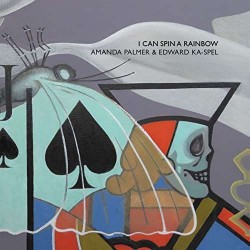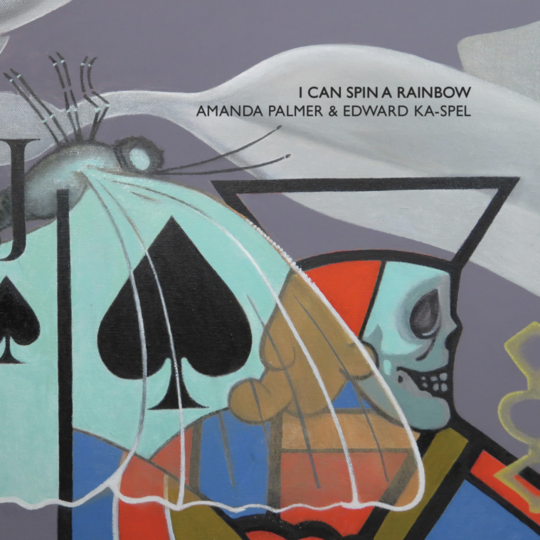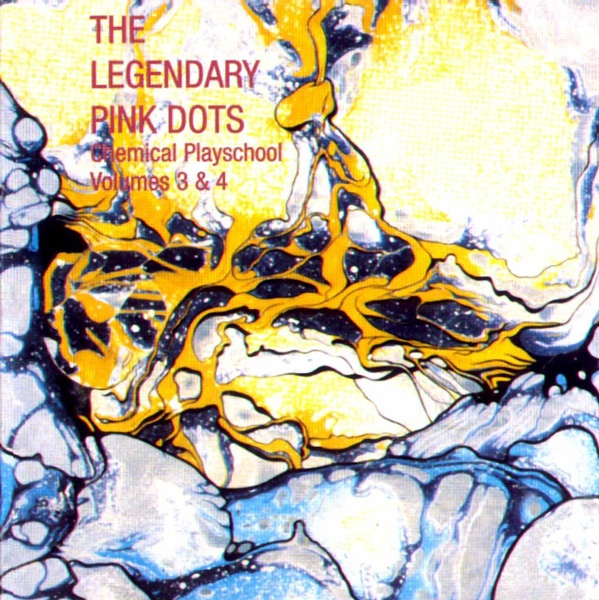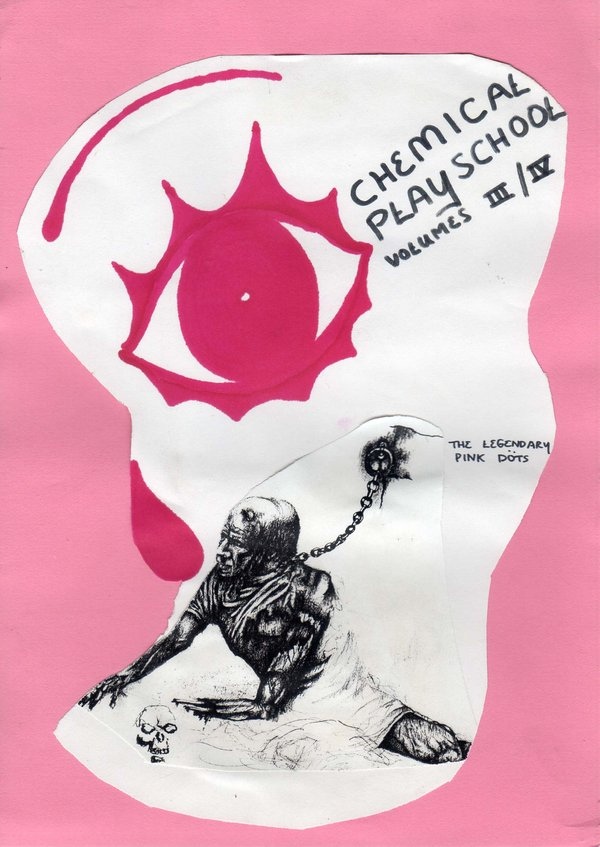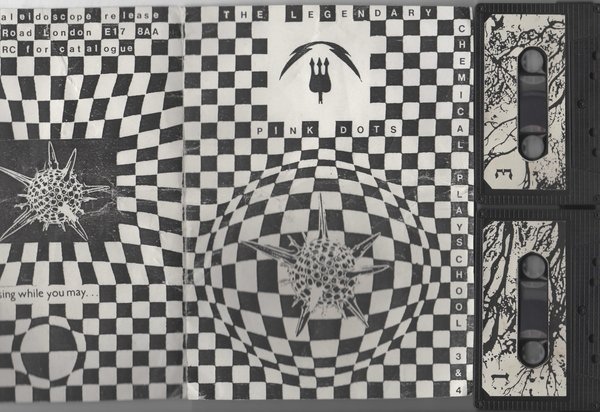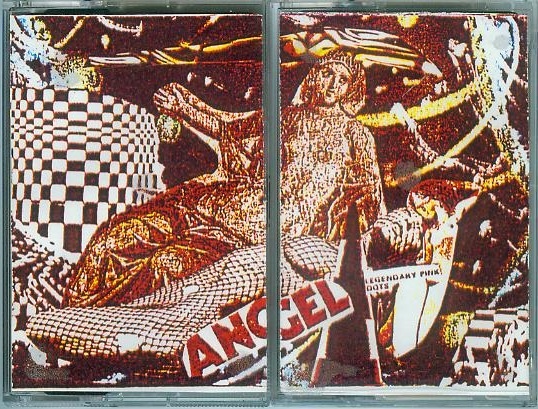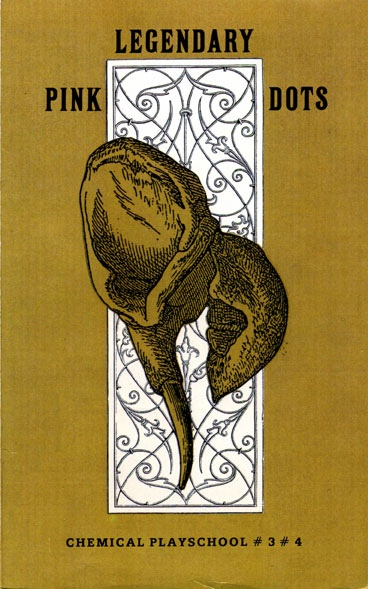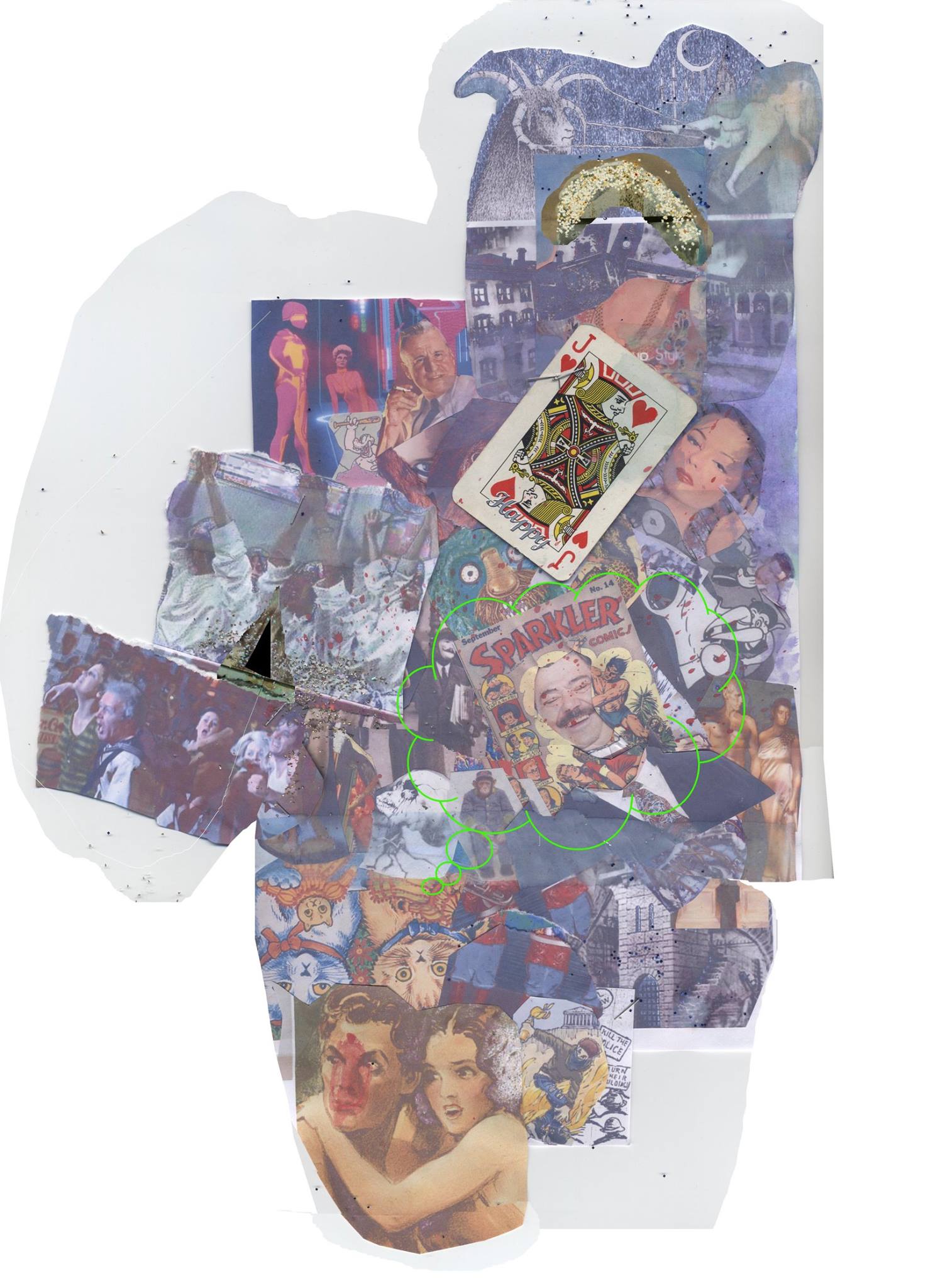
FOUR DAYS
Edward Ka-Spel’s brilliance with The Legendary Pink Dots is to introduce us to isolated characters and then immerse us in their world-view through expansive and mysterious soundscapes. He begins with the most restricted, infinitesimal point of consciousness and then slowly expands it outward towards a state of ‘cosmic consciousness’ (to use the phrase of 1960s psychonauts). Musically, he often follows this template of expansion, with simple melody lines repeating and layering in increased complexity of texture. Much of the LPD’s music is an undertaking to help the listener (and perhaps composer) escape his/her own head. Lyrical phrases, musical motifs, album titles and themes recur across decades, but tonal shifts between albums are slow and subtle. Hopefully, The Legendary Dots Project, like the Residents and Sparks projects before, will provide the keen reader and listener with a giddy entry-point into the Legendary Pink Dots’ musical world. Fulfil the prophecy!
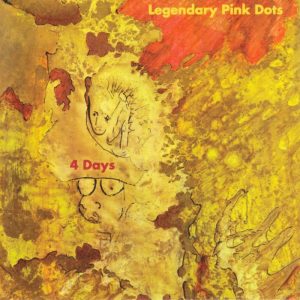
Tom: You know what? The opener ‘The Day She Left’ suggests this will be the sort of ambient record that would soothe and ease you to sleep if, like me, you’d had brain surgery for a subdural haemorrhage. A wistful, searching melancholy is evoked by fuzzy ambient synths. There’s an unresolved stasis. There are hints of later 1990s drone operatives Stars of the Lid and ambient techno meister Mark Van Hoen. There are even hints of Angelo Badalamenti’s VERY 1990 music for Twin Peaks.
We move from this cousin to Badalamenti’s reveries for Laura Palmer into a piece that decidedly would not make for night-time, getting-to-sleep listening: ‘The Day She Returned’. I found Brian Eno’s Discreet Music (1975) great for this purpose. This would have stalled my recovering sleep patterns like a juggernaut ridden by Brian Blessed. We have gurgling arpeggios that almost sound like a Dalek’s “EXTERMINATE!” and brisk, demented percussive vocals from EK-S. These disintegrate into cacophonic nonsense syllables, all clarity smeared and breaking down. This “speaking in tongues” creates a disconcerting, restless quality. The ending dissolves in a pitch-shifted state of sated collapse.
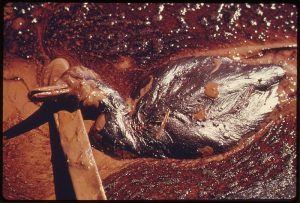
‘The Day She Thought About Leaving and Fell into the Duck Pond’ is led by bare and basic early-90s keyboard. It has the sort of vaguely ominous, circling patterns you’d expect in a horror film soundtrack. Halfway in, there is organ and pitch-shifted vocals. There’s a distinctly Nurse With Wound style to the soundscapes here, with sounds jumping out at you like a horror film scream and what is maybe a human pretending to be a cow! Like ‘Premonition 18’, though, this isn’t really as purposeful as peak NWW.
‘Nadelstadt’ has a looming, martial feel, with use of yet another glum arpeggio to underscore the track. This taut piece builds towards an explosion that never quite happens. This is again film soundtrack type music, with the emphasis on suspense.
‘The Day She Lost the Key’ has the sound of a key being dropped repeatedly, alongside weary, nervous human breaths. The continual nature of the dropping suggests this is the interior of her mind we are hearing, exaggerating the enigmatic loss.
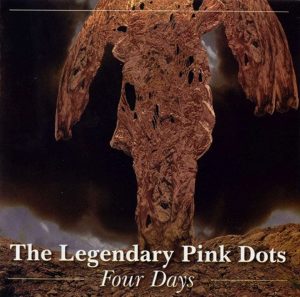
‘Excerpt from the Citadel’ moves back to the more serene mood of track #1, but has a stentorian organ as its commanding lead. A thudding beat emerges around the minute mark, joining the spacey synth swishes and squiggles. It could be sound-tracking the arrival of a spaceship, or the rearing into view of a gigantic squid god. This is soundtrack music closer to the Popol Vuh model than the somewhat underwhelming previous few tracks on this album.
Then, we are faced by the indisputable highlight: ‘Divine Resignation Part 1’, which takes a long time to emerge, but gradually unfurls as a lengthier, more brooding variant to the verdant ‘Prav Naaizh’. This has the vast, mythic quality of the Aguirre: Wrath of God (1972) soundtrack but not that film’s subject matter of epochal, heinous imperialism. This track is concerned with a bewildered and unstable god figure’s melodramatic resignation, from the assumed ‘job’ of presiding over what it has created. This gargantuan track earns its thirteen and a half minutes, building inexorably towards Ka-Spel’s monologue as God, which begins around the 10-minute mark. He speaks of creating “a monster”, “that was never the intention. / The bureaucracy of my vision has now made it impossible to realize the totality of the vision itself.”
Follow the god’s restatement of his retirement, we have the musical masterstroke. A crystalline synth riff appears, and it could be Jean Michel Jarre, Vangelis or even Kraftwerk. It’s startling and beauteous. It’s like a blazing, celestial version of the ‘Tour de France’ or ‘Chariots of Fire’, drumming home the point that this god is leaving his own – vastly convoluted – sporting contest, or rat race…
‘Divine Resignation Part 2’ sounds like Big Ben’s chiming in perpetual stasis, the tolling disallowed. This is a very brief fragment, and then we’re into ‘Your Chinese Has Improved’. Again, arpeggios carry the day. There are hints of Yellow Magic Orchestra in the orientalist chord patterns. Later on, a clattering sample enters and is fed into the track as a looped oddity. It’s difficult to make out exactly what it is: presumably some obscure found sound.

‘East of Shanghai’ is a bit of an inconsequential use of three minutes. Woozy, drawn out chords, with a static lack of progression. It leaves me with the feeling this album would’ve been better as an EP consisting of tracks #1, #2, #6 and #7. Still, those tracks are so good that Four Days is thoroughly worth checking out. Just don’t consider it as a soothing bedtime selection!
Adam: Four Days was conceived as a present for a fan. As such it carries the aura of something overheard; a pressed flower furtively passed between teenage lovers in a schoolroom. It is as slight as a whisper, but not less insidious or potentially damaging. As Tom notes, this is not one to be listened to in a precarious mental state.
Unusually for this period of the Dots’ output it is also an album very short on lyrics. Indeed, musically it recalls the soundscapes of Ka-Spel’s solo work or rather more recent Dots albums from the 2010s like much of The Creature that Tasted Sound (2012) or 2013’s Code Noir. Indeed, the fact that 2015 saw the release of an EP entitled Five Days suggests that Four Days is an album that Knight and Ka-Spel have returned to of late.
Because of the drifting, sometimes free-form nature of the album’s music and lack of lyrics, as listeners we (or at least, I) desire to seize hold of anything concrete that might provide some guidance in how to make sense of what is a strange and disquieting, albeit not altogether unpleasant, experience. The fact that several of the tracks’ titles refer to an unknown She – such as ‘The Day She Left’; ‘The Day She Returned’; ‘The Day she thoughts about leaving but fell into the Duckpond’ – cues this anxious-eager listener to attempt to weave the music around an imagined narrative about an indecisive and accident-prone anonymous woman.
However, the only narrative previously known to me that whatsoever seems to fit the template suggested by these song titles is that of Chris Morris’ 2002 short film My Wrongs #8245–8249 & 117, in which an unnamed man, believing his friend’s dog to be talking to him, ends up slipping the dog’s lead noose-like around his neck and getting pulled into a duck pond. The film’s melancholy synthesis of the whimsical and the darkly absurd is a clear match for the tone of Four Days, which – while not as oppressively dark as The Tower (1984) or Island of Jewels (1986) – is permeated by a sense of paranoiac unease.
As the sweet somnambulistic and undulating drones of ‘The Day She Left’ are subsumed by the pneumatic rattle ‘n’ hum of ‘The Day She Returned’ you can imagine our ill-defined protagonist moving from a lightened courtyard downwards into a dark slowly-narrowing corridor as Ka-Spel pursues Pale Man-like jabbering “I’ll slice up my brother! Gonna slice up my brother!” and “I’m a hole in a fence! I’m a hole in a fence!” and other inexplicable threats which morph into incomprehensible vocal sounds repeated compulsively as the music churns on.
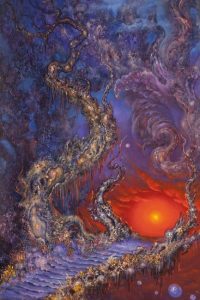
‘TDstalbfitDp’ (an equally incomprehensible consonant-heavy noise when rendered as an acronym!) sounds like it uses those presets you used to find on old Yamahas with names like “crystal spheres”, “elvish fantasy” or “icicle palace” in an over-layered miasma of repeated keyboard melodies… to highly effective ends! Not for the first time in the Legendary Pink Dots Project have I been reminded of the sublime papier–mâché rococo of the Magical Cavern of self-styled Renaissance artist Reon Argondian embedded in the verdant flank of Petřín Hill in Prague, or of the wonderful subterranean sparkle of fairylight displays in guided cavern tours. That is, until about two thirds into the song at which point the elusive “She” presumably falls into the eponymous duck pond, judging by the fluttery in-takes of breath and ominous sounds of synthesised wind which ensue. The fairylights continue to tinkle.
The nightmarish churning and clanking soundscape of ‘Nadelstadt’ was reimagined in marginally more subtle form for ‘Hellowe’en’ on the wondrous gothic dirge of Crushed Velvet Apocalypse released the same year in 1990 (thus our next to be reviewed). ‘The Day She Lost the Key’ is similarly free from melody… or harmony… or rhythm… instead, we have volume, tone and texture ripped free from any conventional songwriting structures. A tone poem, of sorts. It’s at once creepy and a little self-regardingly so. Sharp in-takes of breath and the sound of a set of keys repeatedly picked up and dropped on metal can be heard. It reminds me a little of the background music that used to play in the 1990s horror-themed video boardgames of the Atmosfear series (“Yes, Gatekeeper!”)
According to the Dots’ bandcamp page, “The story of The Citadel was around for some years in EK’s notebook, and was intended to be the theme for an entire album.” This album has never materialised, but a full track of the same name appears on 1995’s
From Here You’ll Watch the World Go By. Here we are just given what the track-listing refers to as “an excerpt”. It’s a squelchy and doom-laden piece of gothic electronica, markedly heavier than most of the rest of the album. Atmospheric but headache-inducing (or maybe that is just testimony to the fact that we are now half-a-decade into this project and neither Tom nor myself are getting any younger!)
I’m somewhat less struck by the ‘Divine Resignation’ tracks than Tom. I will note that this is not the first time than Ka-Spel has penned lyrics from the point of view of a deity with an ambivalent relationship towards His creation. While 1985’s Asylum‘s ‘A Message from Our Sponsor’ was couched in a title suggestive of the Dots’ own musical management, it was very clearly from the point of view of a stubbornly non-internationalist God. The deity of ‘Divine Resignation’ by contrast is a self-pitying God, throwing up His hands at a creation that hasn’t turned out quite as He expected. This has an intriguing parallel in a lesser-known track by The Residents – ‘Godsong’, from 1977’s Fingerprince.
Firstly, some lyrics from ‘Divine Resignation Part 1’:
I’ve created a monster, that was never the intention. The bureaucracy of my vision has now made it impossible to realize the totality of the vision itself. Merely a few friends, as equals. No delusions of grandeur. No petty narrow-minded struggles for power.
And from ‘Godsong’:
A major mistake came when God decided that man should think
(A trait that He’d long desired for Himself)
What God no doubt intended was
For man to think about Him
And that was important because
God just wanted to be
Just another normal deity
Personally the lyrics to ‘Godsong’ succeed where those to ‘Divine Resignation’ don’t because the Residents don’t attempt to anthropomorphise God. Rather, He remains disturbingly mindless… almost infant-like in His need for love and attention. I find the concept of Lovecraft/Ligotti’s “blind idiot God”, despite its squicky ableist connotations, far more convincing that the concept of a bureaucratic God. Bureaucracy firmly belongs to the futile world of humans.
Lastly, ‘Your Chinese Has Improved’ sounds exactly like how the music for an early 90s videogame set in Ancient China should sound. A thousand porcelain bowls in pixel form. ‘East of Shanghai’ must be inspired by the 1931 Hitchcock film also known as Rich and Strange. It beckons like a lighthouse from the fog. Very short and quite evocative. East of Shanghai isn’t regarded as essential Hitchcock and this isn’t really essential Dots.
Overall however Four Days is a rich and lucid trip offered as a gift. It does not feel like a Work of Great Substance but I suspect it was not intended to be. It is a nice eerie way to while away an hour. Lightly but warmly recommended.
May 12, 2018








